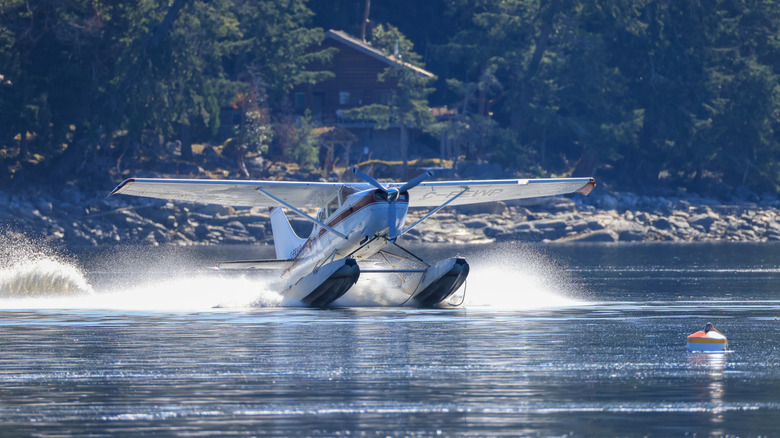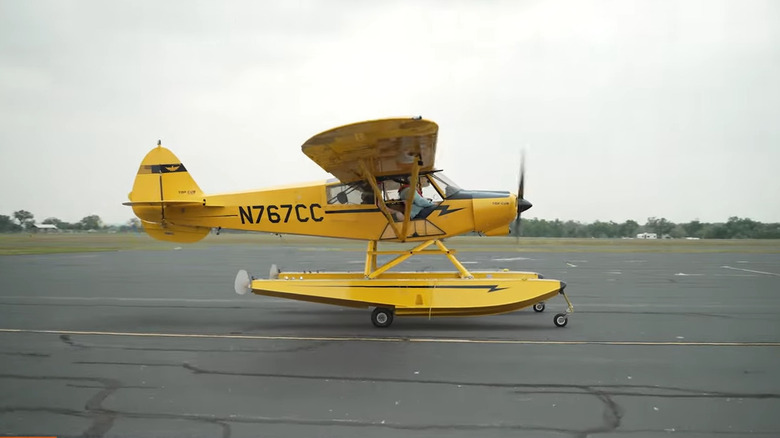Can Seaplanes Land On The Ground?
Boeing is well known for both its passenger jets (such as the 757, which pilots love) and military aircraft. So it's interesting that the first plane it ever built was a seaplane called the Model 1 (aka, "B&W"), and it first took to the air on June 15, 1916. A "seaplane" is a class of aircraft that utilizes a body of water as its primary means for taking off and landing. The most widespread form of seaplanes are known as floatplanes as they utilize floats (sometimes called pontoons) – the long sleek landing components that provide buoyancy that keeps the plane on top of the water. A floatplane is technically a subcategory of seaplane where the fuselage/belly never touches the water.
Another type of seaplane doesn't even have floats per se. In February 1936, Pan American Airways – which went bankrupt in 1991 — asked plane manufacturers to build a transoceanic marine-capable aircraft with four engines which could fly at least 2,400 miles while maintaining a cruising altitude of 10,000 feet at 150 mph. Boeing responded with the 314, a flying boat (often called a hull seaplane) that carried 74 passengers amidst the lap of luxury that included lounges, dining rooms, and 36 sleeping berths. The fuselage acted exactly like a boat hull, so instead of lading on pontoons, it simply dropped into the water belly first.
Those seaplanes that do have wheels are called amphibians and can land on solid ground. But there are some caveats and, as one might expect... some inherent risks.
Amphibious seaplanes can take off and land on the ground
On an amphibious flying boat, the wheels usually retract into the sides of the hull (above the waterline), while on an amphibious floatplane, the main wheels slide up into the floats. Regulations require the floats to support 100% of the plane's weight plus another 80% (for a total of 180%). Straight floats are different from amphibious floats (with wheels) in that they're lighter because they don't have wheels, normally have a stronger nose, and require less maintenance work. The caveat is that seaplanes without wheels need to fly in/out of areas where they can refuel, be serviced, and load/unload while on the water.
Pilots who are flying seaplanes equipped with wheels need to take extra precautions when landing because if the gears are down when they come in for a landing, instead of the slick surface of the floats hitting the water, the wheels will touch first, which in turn will compromise the hydrodynamics of the float and its ability to glide smoothly across the water, causing the plane to flip.
Amphibious seaplanes provide a clear and obvious benefit over straight floatplanes in that the wheels allow the plane to land on the ground as well as in the water, such as the case with the De Havilland (who tried to make the first commercial airline) Canada DHC-6 Twin Otter. The Series 400 is so versatile, in fact, that it can be fitted with standard landing gear, straight floats, amphibious floats, and, if the need arises — skis or wheel skis — to land and take off in the snow.

